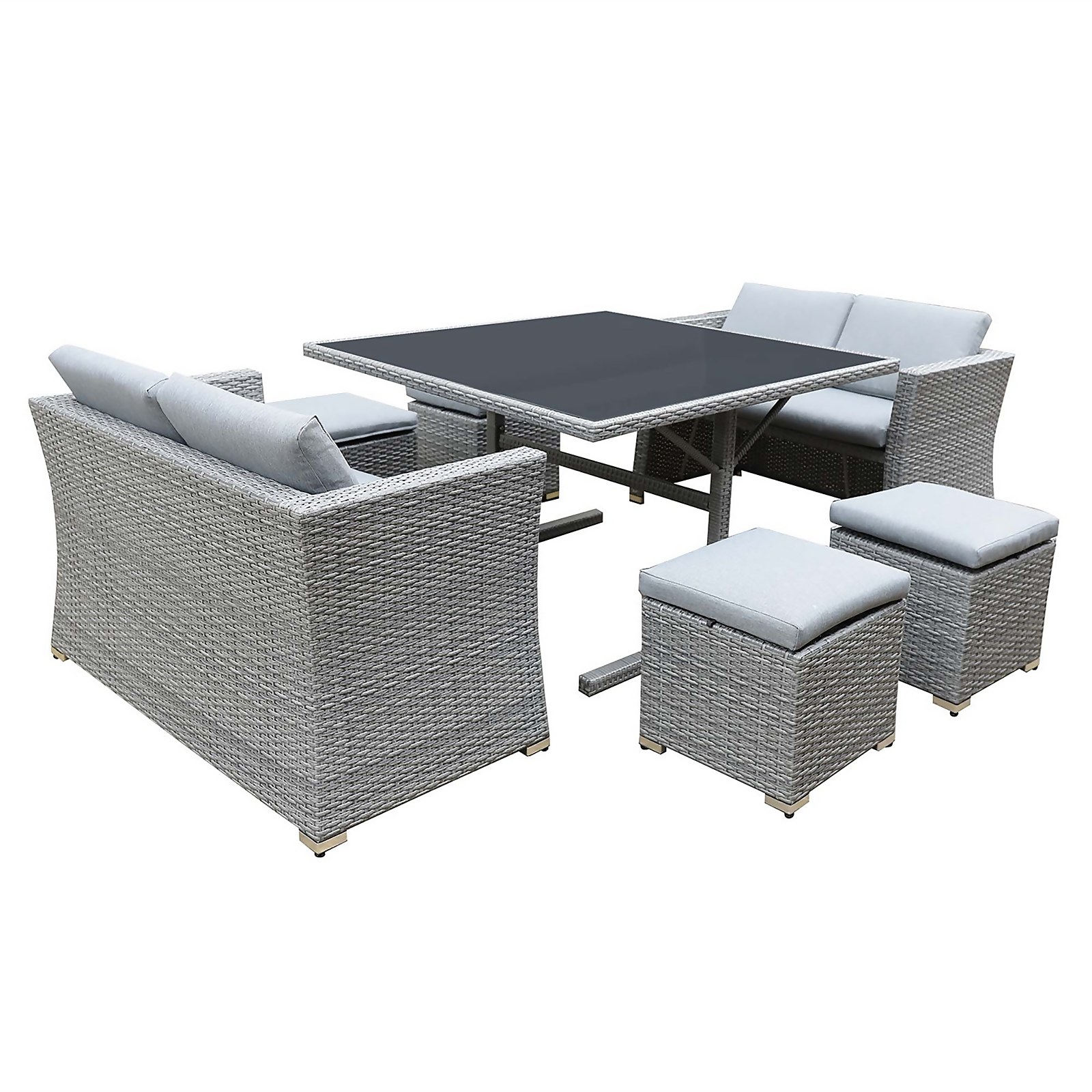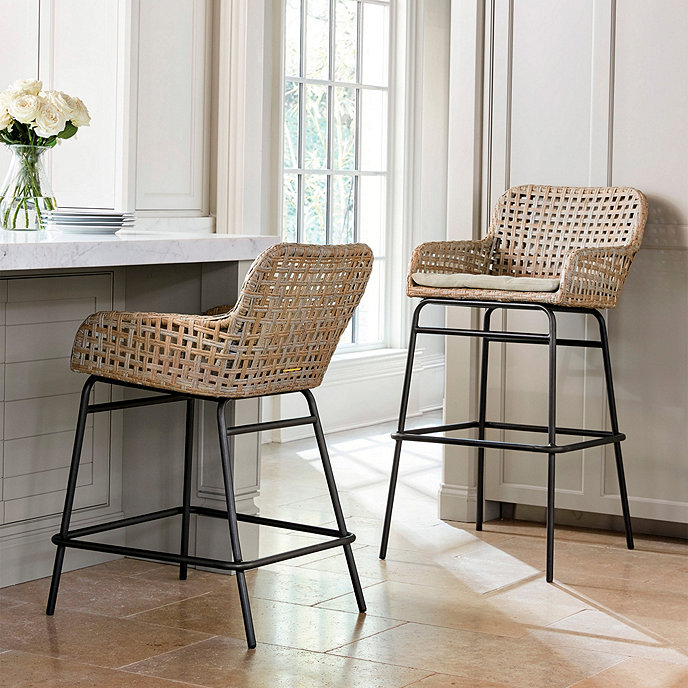Bambrick 8 Seater Grey Rattan Cube Garden Furniture Set
Hand woven rattan effect. Toughened glass top. Easy to maintain and clean. Quality Comfortable Cushions. Space Saving Function.
Create a picturesque garden with the charming Bambrick Cube set. In a grey rattan-effect, its designer look is sure to impress your guests. The sofas and footstools tuck perfectly underneath the table to make this a fantastic space-saving set. Ultra-modern, it is ideal for the whole family or a garden party. The table has a glass top, perfect for setting atop your drinks and snacks. Its stylish grey cushions fold down when it’s time to tuck the sofas under. When the set is not in use, the table makes an attractive patio centrepiece that can be used to display flowers or pot plants.
- Hand woven rattan effect
- Toughened glass top
- Easy to maintain and clean
- Quality Comfortable Cushions
- Space Saving Function
Additional information
| Product Dimensions (H)x(W)x(D) | Sofas – (H)67.5 x (W)118.5 x (D)59cmTable – (H)73.5 x (W)118.5 x (D)118.5cmFootstools – (H)36 x (W)41 x (D)41cm |
|---|---|
| Dimensions Of Footstool (H)x(W)x(D) | (H)36 x (W)41 x (D)41cm |
| Dimensions Of Table (H)x(W)x(D) | (H)73.5 x (W)118.5 x (D)118.5cm |
| Guarantee | 1 Year |






Reviews
There are no reviews yet.